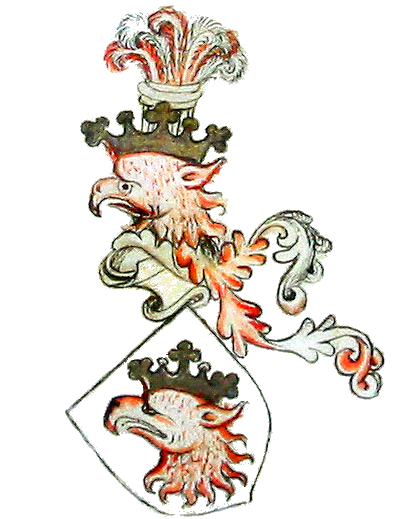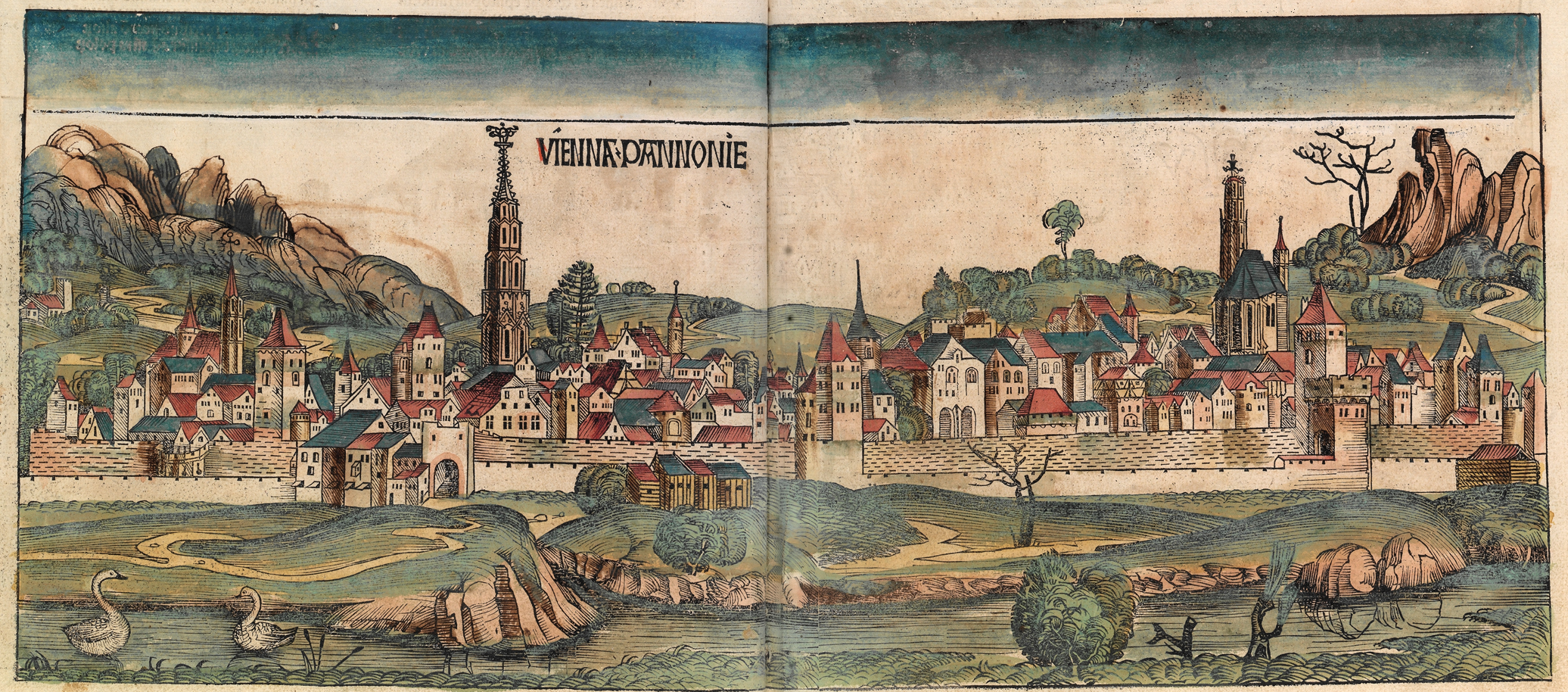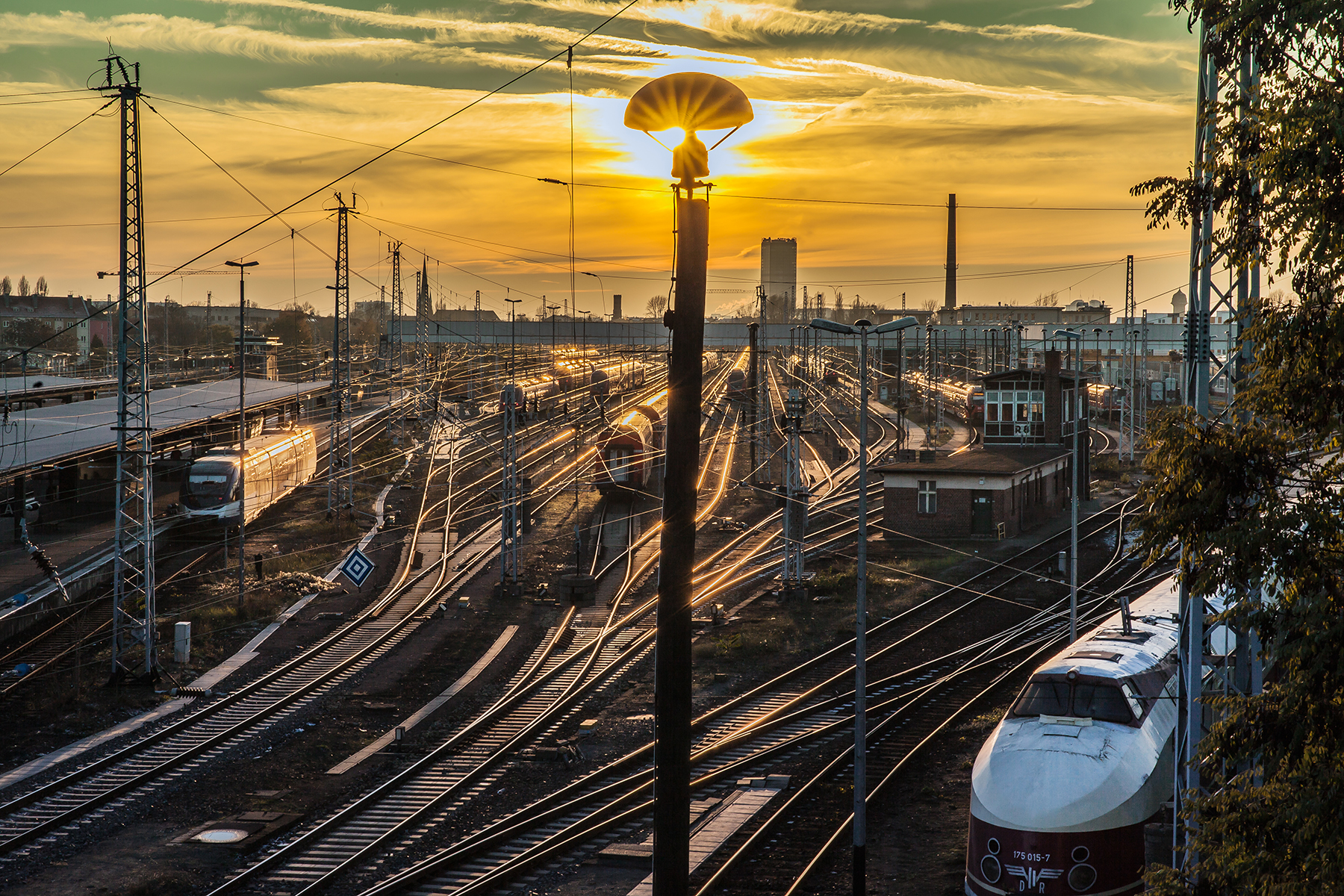|
Hungaria (train)
Hungaria () is a EuroCity train which runs between Budapest Nyugati and Hamburg - Altona, currently running with coaches of MÁV. It is numbered as ''EC 172-173'' and runs daily, mainly with MÁV owned rolling stocks. History Earlier numbering included ''EC 170-171'', ''EC 174-175'', ''IEx 74/75'' and ''Ex 154/155''. The Hungaria international express train is one of the oldest express trains still in operation. Its first run between Budapest and Berlin via Prague was on 29 May 1960 with a diesel locomotive. It was the first train in the former Czechoslovakia which reached a speed of 130 km/h. During the 1970s it ran as an express train between the capitals of Hungary and East Germany under train numbers ''Ex 154/155''. Electric locomotives were introduced in this period. The capacity of these locomotives just reached the necessary level. There were further improvements in the 1980s. MÁV planned to introduce a high level, international rail service with other railway ... [...More Info...] [...Related Items...] OR: [Wikipedia] [Google] [Baidu] |
ČSD Class ES 499
Czechoslovak State Railways (''Československé státní dráhy'' in Czech or ''Československé štátne dráhy'' in Slovak, often abbreviated to ČSD) was the state-owned railway company of Czechoslovakia. The company was founded in 1918 after the end of the First World War and dissolution of Austria-Hungary. It took over the rolling stock and infrastructure of the Imperial Royal Austrian State Railways. In 1930 Czechoslovakia had of railways: the fifth-largest network in Europe. Of these 81% were state (ČSD)-owned, and the trend was to nationalize the remaining private railways. Most of the infrastructure was concentrated in the industrial regions of the Czech lands. 87% of the railroads were single-track. 135,000 people were employed on the railways: about 1% of the population. When Nazi Germany dissolved Czechoslovakia in 1939, the Protectorate of Bohemia and Moravia formed the "Bohemian-Moravian Railway" company (in Czech ''Českomoravské dráhy-ČMD'', in German ... [...More Info...] [...Related Items...] OR: [Wikipedia] [Google] [Baidu] |
Prague
Prague ( ; ) is the capital and List of cities and towns in the Czech Republic, largest city of the Czech Republic and the historical capital of Bohemia. Prague, located on the Vltava River, has a population of about 1.4 million, while its Prague metropolitan area, metropolitan area is home to approximately 2.3 million people. Prague is a historical city with Romanesque architecture, Romanesque, Czech Gothic architecture, Gothic, Czech Renaissance architecture, Renaissance and Czech Baroque architecture, Baroque architecture. It was the capital of the Kingdom of Bohemia and residence of several Holy Roman Emperors, most notably Charles IV, Holy Roman Emperor, Charles IV (r. 1346–1378) and Rudolf II, Holy Roman Emperor, Rudolf II (r. 1575–1611). It was an important city to the Habsburg monarchy and Austria-Hungary. The city played major roles in the Bohemian Reformation, Bohemian and the Protestant Reformations, the Thirty Years' War and in 20th-century history a ... [...More Info...] [...Related Items...] OR: [Wikipedia] [Google] [Baidu] |
Malmö
Malmö is the List of urban areas in Sweden by population, third-largest city in Sweden, after Stockholm and Gothenburg, and the List of urban areas in the Nordic countries, sixth-largest city in Nordic countries, the Nordic region. Located on the Øresund, Öresund Øresund, strait on the southwestern coast of Sweden, it is the largest city in Scania, with a municipal population of 365,644 in 2024, and is the Governors of Skåne County, gubernatorial seat of Skåne County. Malmö received its city privileges in 1353, and today Metropolitan Malmö, Malmö's metropolitan region is home to over 700,000 people. Malmö is the site of Sweden's only Fixed link, fixed direct link to continental Europe, the Öresund Bridge, completed in 2000. The bridge connects Sweden to Denmark, and carries both road and rail traffic. The Öresund Region, which includes Malmö and Copenhagen, is home to four million people. The city was one of the earliest and most-Industrial Revolution, industri ... [...More Info...] [...Related Items...] OR: [Wikipedia] [Google] [Baidu] |
Vienna
Vienna ( ; ; ) is the capital city, capital, List of largest cities in Austria, most populous city, and one of Federal states of Austria, nine federal states of Austria. It is Austria's primate city, with just over two million inhabitants. Its larger metropolitan area has a population of nearly 2.9 million, representing nearly one-third of the country's population. Vienna is the Culture of Austria, cultural, Economy of Austria, economic, and Politics of Austria, political center of the country, the List of cities in the European Union by population within city limits, fifth-largest city by population in the European Union, and the most-populous of the List of cities and towns on the river Danube, cities on the river Danube. The city lies on the eastern edge of the Vienna Woods (''Wienerwald''), the northeasternmost foothills of the Alps, that separate Vienna from the more western parts of Austria, at the transition to the Pannonian Basin. It sits on the Danube, and is ... [...More Info...] [...Related Items...] OR: [Wikipedia] [Google] [Baidu] |
Berlin-Lichtenberg Station
Berlin-Lichtenberg is a railway station in Berlin, Germany. It is located on the Prussian Eastern Railway, Eastern Railway, Wriezen Railway and Berlin Frankfurter Allee–Berlin-Rummelsburg railway lines in the Lichtenberg (locality), Lichtenberg district. The station is also part of the Berlin S-Bahn and Berlin U-Bahn, U-Bahn ( line) network. During the division of the city, Lichtenberg with its extended railyards became the central transport facility of East Berlin, together with Berlin Ostbahnhof. Today, the station mainly provides regional rail service to the eastern and northern environs. Overview The station building marks the southeastern border of the Lichtenberg quarter and is primarily accessible from the ''Weitlingstraße'' neighbourhood in the adjacent Rummelsburg locality. North of it, the Frankfurter Allee, part of the Bundesstraße 1/Bundesstraße 5, 5 highway, crosses the tracks on the eight-lane ''Lichtenberger Brücke'' (Lichtenberg Bridge). Until 2006, int ... [...More Info...] [...Related Items...] OR: [Wikipedia] [Google] [Baidu] |
East Berlin
East Berlin (; ) was the partially recognised capital city, capital of East Germany (GDR) from 1949 to 1990. From 1945, it was the Allied occupation zones in Germany, Soviet occupation sector of Berlin. The American, British, and French sectors were known as West Berlin. From 13 August 1961 until 9 November 1989, East Berlin was separated from West Berlin by the Berlin Wall. The Western Allied powers did not recognize East Berlin as the GDR's capital, nor the GDR's authority to govern East Berlin. For most of its administrative existence, East Berlin was officially known as Berlin, capital of the GDR () by the GDR government. On 3 October 1990, the day Germany was officially German reunification, reunified, East and West Berlin formally reunited as the city of Berlin. Overview With the London Protocol (1944), London Protocol of 1944 signed on 12 September 1944, the United States, the United Kingdom, and the Soviet Union decided to divide Nazi Germany, Germany into three occ ... [...More Info...] [...Related Items...] OR: [Wikipedia] [Google] [Baidu] |
Polish State Railways
The Polish State Railways ( , abbr.: PKP S.A.) is a Polish state-owned holding company (legally a sole-shareholder company of the State Treasury) comprising the rail transport holdings of the country's formerly dominant namesake railway operator. The company was reformed in 2001 when the former Polish State Railways state-owned enterprise was divided into several units based on the need for separation between infrastructure management and transport operations. Polish State Railways is the dominant company in the PKP Group collective that resulted from the split, and maintains 100% share control, being fully responsible for the assets of all of the other PKP Group component companies. PKP today PKP is currently the parent company of the PKP Group, passenger operators PKP Intercity and PKP Szybka Kolej Miejska w Trójmieście. Freight carriers PKP Cargo and PKP Linia Hutnicza Szerokotorowa are also parts of the group. PKP is also one of the largest real estate managers in ... [...More Info...] [...Related Items...] OR: [Wikipedia] [Google] [Baidu] |
Polish People's Republic
The Polish People's Republic (1952–1989), formerly the Republic of Poland (1947–1952), and also often simply known as Poland, was a country in Central Europe that existed as the predecessor of the modern-day democratic Republic of Poland. With a population of approximately 37.9 million near the end of its existence, it was the second most-populous communist government, communist and Eastern Bloc country in Europe. It was also where the Warsaw Pact was founded. The largest city and capital was Warsaw, followed by the industrial city of Łódź and cultural city of Kraków. The country was bordered by the Baltic Sea to the north, the Soviet Union to the east, Czechoslovak Socialist Republic, Czechoslovakia to the south, and East Germany to the west. The Polish People's Republic was a unitary state with a Marxist–Leninist government established in the country after the Red Army's takeover of Polish territory from Occupation of Poland (1939–1945), German occupation in ... [...More Info...] [...Related Items...] OR: [Wikipedia] [Google] [Baidu] |
Czechoslovak Socialist Republic
The Czechoslovak Socialist Republic, (Czech language, Czech and Slovak language, Slovak: ''Československá socialistická republika'', ČSSR) known from 1948 to 1960 as the Czechoslovak Republic (''Československá republika)'', Fourth Czechoslovak Republic, or simply Czechoslovakia, was the Czechoslovakia, Czechoslovak state from 1948 until 1989, when the country was under Marxist-Leninist state, communist rule, and was regarded as a satellite state in the Soviet Union, Soviet sphere of interest. Following the 1948 Czechoslovak coup d'état, coup d'état of February 1948, when the Communist Party of Czechoslovakia seized power with the support of the Soviet Union, the country was declared a "people's democratic state" when the Ninth-of-May Constitution became effective. The traditional name (''Czechoslovak Republic''), along with several other state symbols, were changed on 11 July 1960 following the implementation of the 1960 Constitution of Czechoslovakia as a symbol of th ... [...More Info...] [...Related Items...] OR: [Wikipedia] [Google] [Baidu] |
Eastern Bloc
The Eastern Bloc, also known as the Communist Bloc (Combloc), the Socialist Bloc, the Workers Bloc, and the Soviet Bloc, was an unofficial coalition of communist states of Central and Eastern Europe, Asia, Africa, and Latin America that were aligned with the Soviet Union and existed during the Cold War (1947–1991). These states followed the ideology of Marxism–Leninism, in opposition to the Capitalism, capitalist Western Bloc. The Eastern Bloc was often called the "Second World", whereas the term "First World" referred to the Western Bloc and "Third World" referred to the Non-Aligned Movement, non-aligned countries that were mainly in Africa, Asia, and Latin America but notably also included former Tito–Stalin split, pre-1948 Soviet ally Socialist Federal Republic of Yugoslavia, Yugoslavia, which was located in Europe. In Western Europe, the term Eastern Bloc generally referred to the USSR and Central and Eastern European countries in the Comecon (East Germany, Polish Peo ... [...More Info...] [...Related Items...] OR: [Wikipedia] [Google] [Baidu] |
East Germany
East Germany, officially known as the German Democratic Republic (GDR), was a country in Central Europe from Foundation of East Germany, its formation on 7 October 1949 until German reunification, its reunification with West Germany (FRG) on 3 October 1990. Until 1989, it was generally viewed as a communist state and described itself as a Socialist state, socialist "workers' and peasants' state". The Economy of East Germany, economy of the country was Central planning, centrally planned and government-owned corporation, state-owned. Although the GDR had to pay substantial war reparations to the Soviets, its economy became the most successful in the Eastern Bloc. Before its establishment, the country's territory was administered and occupied by Soviet forces following the Berlin Declaration (1945), Berlin Declaration abolishing German sovereignty in World War II. The Potsdam Agreement established the Soviet occupation zone in Germany, Soviet-occupied zone, bounded on the east b ... [...More Info...] [...Related Items...] OR: [Wikipedia] [Google] [Baidu] |




